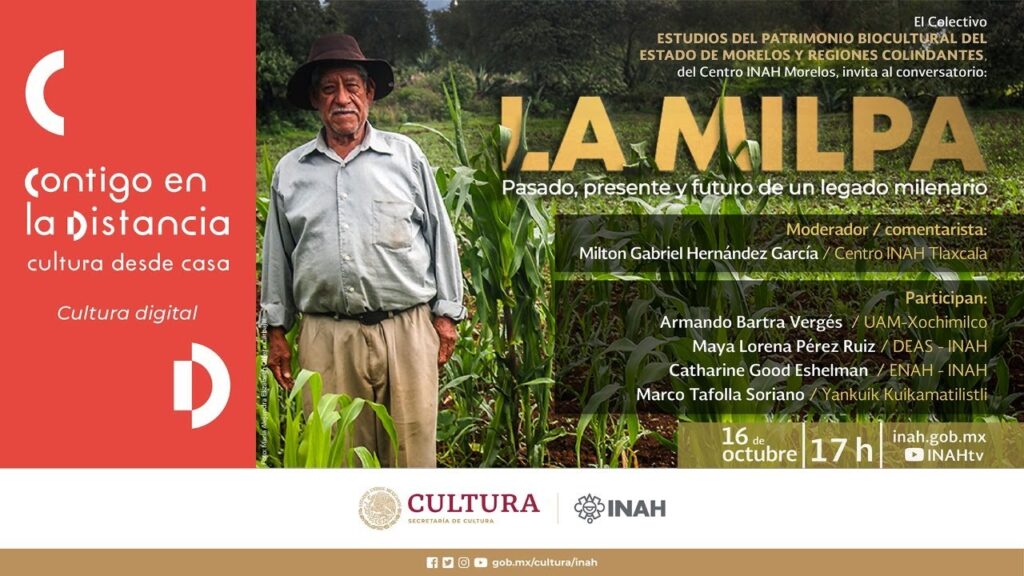Discovering La Milpa: A Millennia-Old Indigenous Agricultural System in Mexico
La Milpa is not just a method of farming; it’s a complex, intertwined system of agriculture that has been practiced for several millennia by the indigenous peoples of Mexico. Its origins are as ancient as some of the most enigmatic civilizations of Mesoamerica. This agricultural technique is often characterized by its diversity and sustainability, thanks to the intercropping of various plant species, predominantly maize, beans, squash, and chili peppers, among others.
The brilliance of La Milpa lies in its harmony with nature. By planting multiple crops in the same space, farmers can create a natural pest management system and improve soil fertility. The beans fix nitrogen in the soil, benefiting the nutrient-hungry maize, while the squash acts as a living mulch, its broad leaves shading the soil and retaining moisture. This polyculture farming not only supports the health of the ecosystem but also provides a balanced diet from a single plot of land.
In the heart of Mexico, traditional La Milpa systems still operate much as they did thousands of years ago, embodying a legacy of agricultural knowledge and cultural identity. Farmers nowadays, who are the bearers of this tradition, continue to utilize ancient techniques passed down from generation to generation, ensuring that the practice remains alive. They work the land without the aid of modern machinery, relying on manual labor, organic fertilizers, and the wisdom of forebears to guide their work.
Modern agronomists and environmentalists are becoming increasingly interested in La Milpa because of its resilient nature in the face of climate change. This indigenous agricultural practice has the potential to offer valuable insights into sustainable farming methods that can be adapted and implemented around the world. As we delve deeper into the principles of La Milpa, it offers a glimpse into the deep connection between the culture of Mexico’s indigenous peoples and their time-honored rapport with the earth.
The Ecological Wisdom of Indigenous People Behind La Milpa
The concept of La Milpa is more than just a farming technique; it is a testament to the deep ecological understanding of Mexico’s Indigenous peoples. Rooted in the harmonious relationship between humans and nature, La Milpa represents a multifaceted agricultural approach that has been nurtured for centuries. This system is not only sustainable but incredibly efficient in maintaining biodiversity and soil health while providing a variety of crops.
Within the traditional practice of La Milpa, crops like maize, beans, and squash are grown together—a technique known as polyculture. This intercropping strategy optimizes land use and leads to natural pest control, reducing the need for artificial herbicides and pesticides. The combination of these crops creates a symbiotic relationship; for example, beans replenish the soil with nitrogen, which maize heavily draws upon, while the squash’s broad leaves shade the ground, preserving the soil’s moisture.
Indigenous knowledge systems are at the core of this agro-ecological practice. These systems have developed a profound understanding of the local ecology, including soil types, rainfall patterns, and the biological interactions between plant species. Indigenous farmers read the land and climate with acute precision, allowing them to make informed decisions that ensure sustainable crop production year after year.
The wisdom encapsulated in La Milpa extends beyond agriculture; it is a philosophy of life that respects the rhythms of nature and the interconnectedness of all living things. The practice encourages community involvement and collective responsibility, which has been instrumental in conserving Mexico’s rich environmental and cultural heritage. It is a model that holds invaluable lessons for contemporary agricultural practices and our global approach to environmental stewardship.
La Milpa: Sustaining Biodiversity and Traditions in Mexico
La Milpa is more than just a traditional farming technique; it is a cornerstone of Mexican agroecological wisdom that dates back to pre-Columbian times. This practice involves growing a variety of crops, most commonly corn, beans, squash, and chili, in the same field. The intertwining of these plants not only maximizes the use of space but also promotes a symbiotic relationship between them. Corn stalks act as natural trellises for the beans to climb, the bean vines enhance soil nitrogen levels beneficial for all plants, and the broad squash leaves shade the ground, reducing weed growth and preserving soil moisture.
The philosophy behind La Milpa is deeply intertwined with the principles of biodiversity conservation. By encouraging a polyculture system, it naturally resists pests and diseases, which may otherwise devastate a single-crop field. This reduces the reliance on chemical pesticides, thus protecting the environment and sustaining high levels of biodiversity within the agroecosystem. Not only does this practice support the health of the local ecosystem, but it also ensures the genetic diversity of crop species, which is vital for food security in the face of climate change.
Beyond its environmental benefits, La Milpa serves as a bastion of cultural identity and social cohesion within Mexican communities. It is a practice steeped in tradition, passed down through generations, encapsulating a wealth of indigenous knowledge and community spirit. The harvest is often a communal effort that reinforces social bonds and provides a platform for sharing and cooperation. This ancient system remains a testament to the ingenuity of past generations and their harmonious relationship with nature, offering insights into sustainable agricultural practices long before modern industrial farming took root.
How La Milpa Demonstrates the Indigenous Connection to the Land
La Milpa, a traditional Mesoamerican agricultural system, is a testament to the intimate relationship that the indigenous peoples of Mexico have maintained with their land for centuries. This ancient farming method is based on the cultivation of multiple crop species in a single field, creating a biodiverse and sustainable ecosystem. The interplanting of corn, beans, and squash, often referred to as “The Three Sisters,” showcases an ecological understanding that has been passed down through generations.
The synergy between these crops is remarkable. The corn provides a natural structure for the beans to climb, eliminating the need for artificial trellises. Beans, being legumes, fix nitrogen in the soil, which in turn benefits the corn. Squash, with its broad leaves, shades the ground, preserving moisture and preventing the growth of weeds. This collaboration between plant species illustrates the indigenous peoples’ deep knowledge of their environment and their ability to work alongside it rather than attempting to dominate it.
Beyond the practicalities of crop yields and soil health, La Milpa holds a deeper cultural significance. It embodies a philosophy of life that respects and celebrates the interconnectedness of all living things. The cyclical nature of the farming practices, from planting to harvest, mirrors the cycle of life and speaks to a spiritual dialogue with nature that is central to indigenous cultures in Mexico. Through La Milpa, we can glean insights into a worldview that venerates the earth, not as a resource to be exploited, but as a sacred entity to be honored and preserved.



